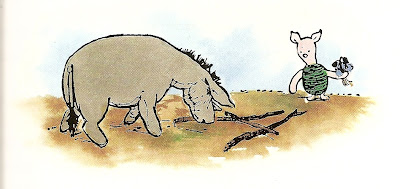 (Make slick signs here)
(Make slick signs here)
He’s right, we do crave the familiar. At least, I do.
I remember hearing a tape by Rabbi Akiva Tatz (the Chicago Community Kollel brough him in to speak in 1998 and I purchased a tape) discuss the idea that ones’ neshama naturally gravitates toward mitzvos. That’s why, he said, when someone becoming observant learns a concept or a certain halacha dealing with Shabbos or Kashrus, for example, it clicks or makes sense to him or her. We feel as if we ‘knew it’ already.
It could also be why lighting the menorah and having some sort of a Pesach seder are the most common Jewish ‘rituals’ celebrated by our not-yet-Observant brothers and sisters (see this post). On a neshama level we connect with these actions.
There are time in life when I hear, see, or am reminded of something and a wave of happiness, content, or excitement comes over me.
Example: Several years ago I was able to hear Rav Shmuel Brazil daven Hallel on Simchas Torah in Yeshva Shor Yoshuv. Whenever I hear certain niggunim I am transported back to an incredible 45 minutes of intense davening and simcha.
Example: After about a year of living in Indianapolis I stumbled upon a 7-11 store. Ahhh…Slurpees! A favorite drink of mine anytime of the year. Just seeing those familar numbers “7” and “11” gave me a weird feeling of comfort. It’s the same way when we drive to New York and start seeing signs for different expressways, bridges, and tunnels.
The neshama (and in the case of Slurpees, the guf) craves what it knows…Torah and Mitzvos. It’s interesting what things we hold dear from childhood through adulthood.
So, coming back to sequels (yes, I intended to make the pun…ha-ha), this is trend of the “summer of sequels” might just be an echo of something much more deep. Thanks for reading!




